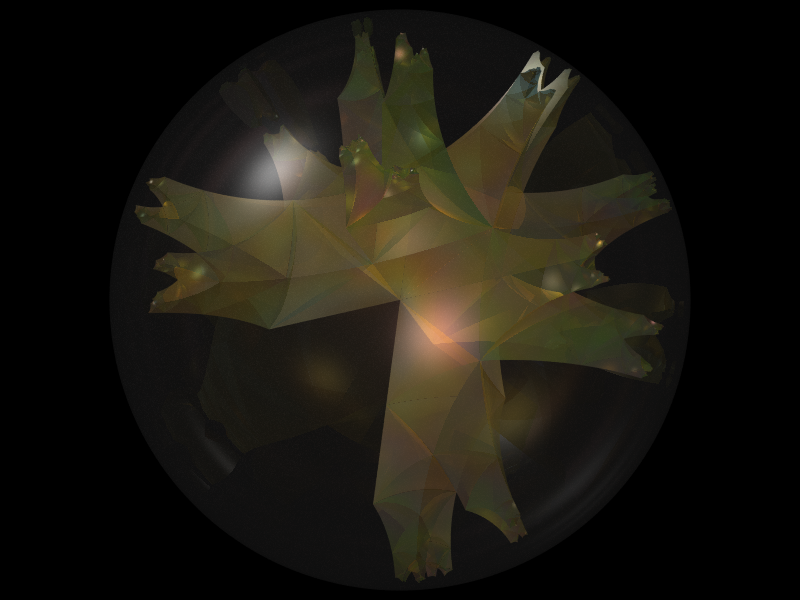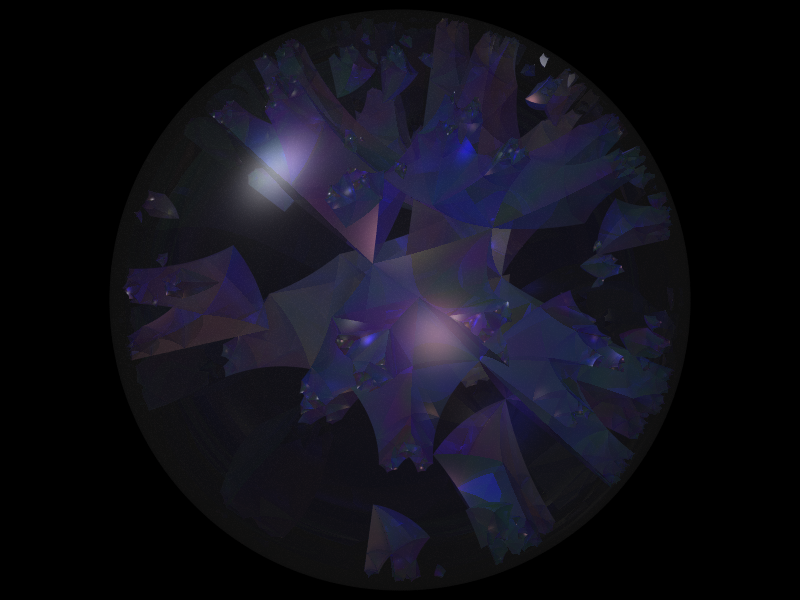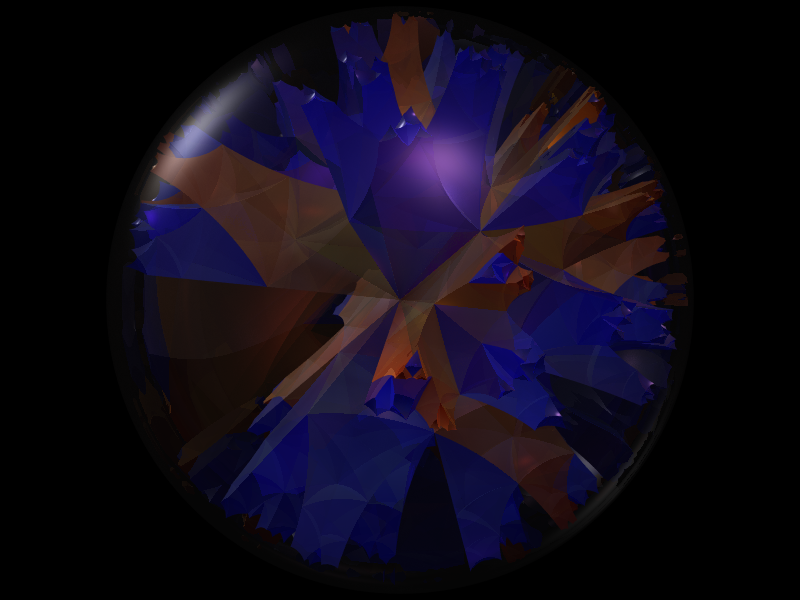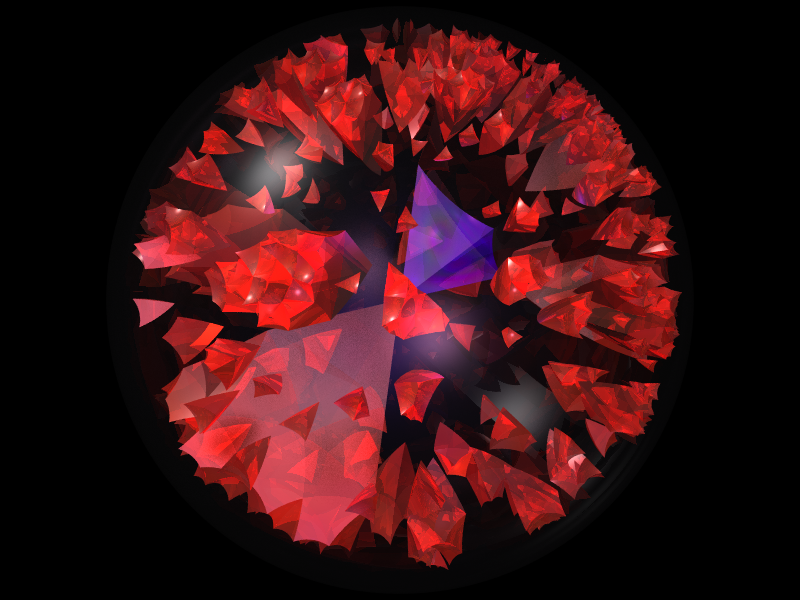Here are pictures of Kazhdan-Lusztig cells for some hyperbolic planar Coxeter groups. The pictures were generated by kludging together different pieces of software:
Each group can be downloaded in gzipped Postscript, Postscript, or PDF. The Postscript files look better at different sizes, but they are rather large. You can get the whole mess as a gzipped tarfile of Postscript files.
The notation p q r means the triangle group generated by reflections through the sides of a hyperbolic triangle with angles (Pi/p, Pi/q, Pi/r).
Here the notation p q r s means the group generated by reflections through the sides of a hyperbolic quadrilateral with angles (Pi/p, Pi/q, Pi/r, Pi/s).
Here we consider a Coxeter group generated by reflections through the facets of a compact hyperbolic tetrahedron. These images were generated by Andrew Havens as part of an REU in Summer 2009. He used java and the Processing graphics programming language. The group below has Coxeter diagram a square with labels 4, 3, 3, 3. The colors are chosen to emphasize the analogy with the 2D hyperbolic cells above, such as in the group (2,3,7).
Figure 1 shows the two-sided cell of nontrivial elements with unique reduced expressions. There are four one-sided cells, here, each meeting a facet of the identity alcove.
Figure 1: |

Figure 2 shows the next most complicated 2-sided cell, corresponding to the edges of the identity alcove.
Figure 2: |

In Figure 3 we see them together.
Figure 3: |

Finally, Figure 4 shows the most complicated 2-sided cell, together with the identity alcove.
Figure 4: |
